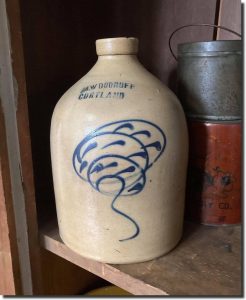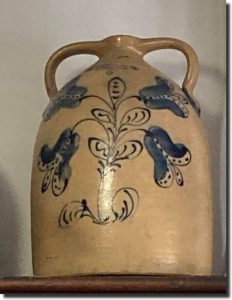Woodruff Street was accepted as a new street on June 8, 1885, and was named after Madison Woodruff. The second portion of Woodruff was opened from Maple Avenue to Madison Street and was accepted on August 1, 1910. Madison Woodruff owned the tract of land there and operated a pottery on Groton Avenue.
Madison and his wife, Hannah Russell Woodruff, came to Cortland in 1831. He began work as a journeyman in the pottery of Sylvester Blair, the original stoneware manufacturer in the area. He worked for Blair for several years and in 1849, he began his own pottery business. He constructed a brick building on Groton Avenue in 1855. He retired about ten years before his death in 1894


Woodruff was named after the candidate for U.S. President, James Madison. Woodruff’s father was “a warm political friend” of Madison and so he named his son for him. Woodruff’s obituary states that he was an abolitionist and a Whig, though he became a Republican as soon as the party was formed. He was not wont to take on political positions, though he was a trustee of the village of Cortland for two terms and he was the overseer of the poor for many years. Woodruff was a trustee of the Cortlandville Academy, the Rural Cemetery, and the Savings Bank. He was a deacon at the Universalist Church.
In 1890, Mr. and Mrs. Madison Woodruff celebrated their 60th anniversary with many friends and family at their home at 120 Groton Avenue. Both would die at home and be laid out there, Madison in 1893 from blood poisoning, and Hannah in 1894 from a cold. Their home is no longer standing. The lot is occupied by a building which was most recently used as a computer technology business.

How much the world has changed in a little over a hundred years—a pottery factory to a computer technology business in just a few generations! What is the most fascinating time period for you? What era would you go back to visit if you could? ~Tabitha

Comments are closed, but trackbacks and pingbacks are open.